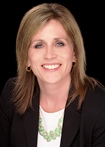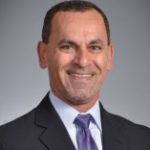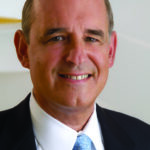Association Leaders Weigh in About Next Gen, Member Challenges and More
Our colleague Eryn Underwood’s recent article Why Millennials Join Associations and What Associations Can Do to Keep Them has been republished by a number of state society publications, so it appears we struck a nerve. To that end, we asked a panel of association leaders:
- How they are connecting with industry up-and-comers,
- How they’re retaining members once they acquire them and
- How they’re helping members of all ages further their professional development and advocate on their behalf.
- Derek Poarch of @APCOIntl: Every staff member has goals and objectives tied to our association’s strategic plan. Everyone is empowered to suggest ideas.
- Russ Webb of @AAA_Tweets: All member communications go through our recently-graduated communications coordinator to ensure the message resonates with younger members.
- Christie Pruyn of @ChicagoMPI: We cut back on face-to-face meetings because when you ask for that time commitment, you risk not having the right kinds of people on your board.
Note: Full text of this thought leadership roundtable can be found in the 2016 issue of Association Adviser magazine – coming soon.
Association Adviser: How is your organization connecting with millennials?

Daniel Obst, deputy vice president, international partnerships at the Institute of International Education: Millennials care a lot about mission and values, and the best way to connect with them is through Facebook, not email. We have about 120,000 likes on Facebook. Instagram has also been successful because it’s so visual. Our new Twitter channel has about 15,000 followers. Facebook is very effective for international outreach. Instagram seems best for U.S. outreach.

Russ Webb, vice president of the Atlanta Apartment Association (AAA): Our communications coordinator is only one year out of college. Everything we plan to send out to members and the public must go through her. ![]() If she thinks any communication piece is not going to resonate with younger members, she’s very quick to let us know. Also, we’re very inclusive of each generation when we put together our committees, including Next Gen.
If she thinks any communication piece is not going to resonate with younger members, she’s very quick to let us know. Also, we’re very inclusive of each generation when we put together our committees, including Next Gen.

Christie Pruyn, CAE, CIS, executive director of the Chicago area chapter of Meeting Professionals International (MPI-CAC): We’re listening very carefully to what the younger people are telling us. We used to have our monthly board meeting face-to-face. But, with all the other requirements these folks have, it was becoming too much. And when you’re asking people for such a big time commitment, you risk not having the right kinds of people on your board. ![]() Millennials don’t want to meet face-to-face. They want to video-conference in, or [check in] from their phones. It’s been a good shift. Now we don’t require as many face-to-face meetings.
Millennials don’t want to meet face-to-face. They want to video-conference in, or [check in] from their phones. It’s been a good shift. Now we don’t require as many face-to-face meetings.

Sylvia Newell, executive director, Canadian Association of Railway Suppliers (CARS): We strongly encourage [young members] to participate in the direction of our association and join committees. We recently introduced a scholarship program for CARS members (or members’ families) to invest in education in the railway industry. Ideally, the scholarship will go to someone who is younger and going through training in the railway industry. We need to do everything we can to make the railway industry as sexy and appealing to the next generation.

Abe Eshkenazi, CEO of APICS: It’s a matter of awareness. You have to make [our profession] real for guidance counselors, academic advisers, even for parents. They’re the trusted advisers for the next generation. We’ve got to make sure we’re giving those advisers the appropriate support they need.
AA: Do you have any special networking and leadership development programs for your young members?

Betsy Monseu, chief executive officer of the American Coal Council (ACC): The Tomorrow’s Leadership Council has been a very popular program. It’s been a good way to connect not only with millennials, but with others who may have come into coal later their careers. It’s a great way to get networked with a peer group and to gain exposure to senior leaders in the industry. I wish I had a program like this in the early years of my own career.

John Hoyles, CEO of The Canadian Bar Association: We have a Young Lawyers Forum—a group of 20 lawyers from around the country who get together to brainstorm. We’re also revamping the website so people can find exactly what they’re looking for ASAP. If they can’t find it right away, they’ll go someplace else and never come back to your site.

Michael Dunham, CEO of the Associated General Contractors of Georgia, Inc.: Keeping the association relevant for the younger generation of members is job No. 1 for a lot of our chapters. Like I said, Georgia was one of the first AGC chapters to have a Young Leaders Program when we introduced it more than 16 years ago. I attribute the success of that program to a wise, longstanding member who saw two things we needed to get out in front of: (a) young leaders and (b) technology. We formed committees for both [areas] and we invite experts to come in and talk about the latest software or 3D modeling or the use of drones. Sharing all this information and best practices helps our members be as competitive as they can be.
AA: Speaking of young leaders, what’s the biggest difference you’re seeing between their management style and that of older generations?

John Graham, president, American Society of Association Executives (ASAE): Every leader, regardless of age, seeks face-to-face interaction and interpersonal relationships. But, technology actually enables communication. The younger generation is much more comfortable with technology. It’s viewed more as a communication enabler than, “something I have to learn how to do.” It’s part of their way of life.

Patrick Leclerc, president & CEO, Canadian Urban Transit Association (CUTA): The way to get the most out of each person who works (or volunteers) for you is to recognize that everyone is different. Some people need clear direction. Others just want to know what the end goal is and they’ll design their own way to get there. As a leader, you’re there to set the direction and make sure your people have the tools they need to get the job done.
AA: How is your organization helping members of all ages with their toughest challenges?
Webb: It’s all about regulatory issues. Municipalities tend to think all apartments are run by giant multibillion dollar companies. The truth is that most apartment owners are small businesses. We go to bat on behalf of our members and help them with regulatory support. Also, we help members stay on top of what we call “the changing face of the renter.” Both building owners and managers need to know what future generations expect in apartment living. Those needs of the future must be incorporated into the design stage now.
Monseu: I agree: regulatory and marketplace challenges. We have been increasingly active in responding to those regulations by putting our council’s position in writing and in formalized comments about the rulemaking that is occurring.
Dunham: Definitely regulation. Government agencies seem to be working overtime to put in rules and regulations that impact our industry. We work hard to keep members current so they don’t run afoul of all the new rules. We help them apply the costs of those regulatory burdens into their businesses. We’re also trying to get all members—not just the younger ones—to adopt computerization and advanced productivity techniques in the construction process.
Leclerc: We continue to help our members with long-range planning, traffic congestion, competition from the private automobile, vehicle design, transit marketing, government relations and federal regulation. More recently, the focus has been on obtaining sustainable funding to keep expanding and maintaining public transit. We also help members deal with ever-rising customer expectations.
Eshkenazi: We still have a stigma—coming out of manufacturing. Many view [supply chain and logistics] as shop floor work as opposed to high-tech robotics. It’s a global and highly complex field that needs individuals who are highly trained. Part of the challenge is making our industry a career choice and being responsive to organizations that need people trained in those areas. Unfortunately, most students don’t go into supply chain until their junior year or later after starting in finance or engineering.
Dunham: Yes, there’s the workforce development challenge for us as well. We need more talent. For every new person who enters our industry, four to five boomers are “retiring out.” One of our primary focuses is to get the word out about how you can make a very good living in the construction trade if you’re skilled and willing to work hard.
Hoyles: Keeping members in the profession. Our research found that 68 percent of lawyers had big concerns about depression, stress and anxiety. I was a big driver of the Mental Health and Wellness in the Legal Profession initiative and helped raise the money for it. It’s a four-module online course that raises awareness and gives lawyers, judges and law students information about mental health and addiction issues, their causes and symptoms, as well as prevention treatment options. Response has been absolutely amazing.
AA: Speaking of talent development, how do you get the most out of your young staff, volunteers and members?
Eshkenazi: Once you get young people into the workplace, make sure that what they’re working on is relevant. You’ve got to engage them. You’re not just giving them a job; you’re listening to them and giving them the opportunity to influence the organization. I didn’t come to APICS to develop supply chains. I came to APICS to develop people. If we develop people at the staff level, member level and the supply chain level, they’ll develop better supply chains.

Kurt Nagle, president and CEO of the American Association of Port Authorities (AAPA): They’re very driven and enthusiastic. They want to be innovative and creative. As long as you provide them with good guidance about the organization’s goals, then you’re going to get good ideas and creative [solutions] from them.

Derek Poarch, executive director of APCO International, the world’s oldest and largest organization for public safety communications professionals: I don’t communicate with millennials any differently than I communicate with someone who’s been here for 25 years. Every [staff] person, regardless of age, has measurable goals and objectives tied to our association’s strategic plan. It may sound tough, but we have very low turnover here. Everyone is empowered to suggest ideas. ![]() We’re a compassionate family here and we care about each other.
We’re a compassionate family here and we care about each other.
Graham: Younger leaders put much more emphasis on work/life balance and are drawn to organizations that value work/life balance.
Leclerc: I agree. The biggest challenge for any senior leader is finding balance in life. Success in life should not be defined only by your career. I’m passionate about what I do and I love to spend time with members, but I have three young children (ages 8, 5 and 10 months) and I want to spend time with them and my wife. I want to spend time with friends. To be fulfilled and happy, you need to have balance in life. That’s what keeps me grounded
Hoyles: For young people in your audience, the analytical training you get from law opens the door to so many things besides the traditional practice of law. And if you do decide to pursue a legal career, more and more firms are understanding the value of work/life balance, mental health and staff retention.
Full text of this roundtable can be found in the 2016 issue of Association Adviser magazine – coming soon.

